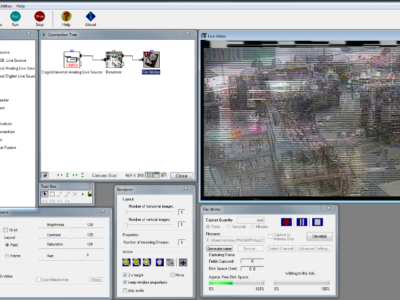Introduction
Digital forensics is a vital aspect of modern investigations, actively involved in deciphering the intricate nature of criminal activities that involve electronic evidence. This forensic science branch focuses on tasks such as identifying, acquiring, processing, analyzing, and reporting on Digitally stored data.
In today’s tech-driven world, electronic evidence has become a foundational element in almost every criminal case. Hence, the role of digital forensics is Essential for law enforcement investigations.
The Three Main Stages of a Digital Forensics Investigation
- Identification and Collection: The process begins with the identification of potential sources of electronic evidence. This could range from computers and mobile devices to servers and cloud storage. Once identified, the evidence is collected in a forensically sound manner to ensure its admissibility in legal proceedings.
- Analysis: In this stage, the collected electronic evidence undergoes thorough analysis. Forensic experts use specialized tools and techniques to examine the data for any signs of tampering, encryption, or hidden information. The goal is to reconstruct the sequence of events and gather insights into the actions of the involved parties.
- Reporting: The findings of the analysis are then compiled into a comprehensive report. This report serves as a crucial document in legal proceedings, presenting the digital evidence in a clear and understandable format. It includes details about the methods used, the results obtained, and the conclusions drawn from the investigation.
Role of Technology in Forensic Investigations by the Police
Technology plays a pivotal role in the forensic investigations conducted by law enforcement agencies. It serves as both a tool and a challenge in the digital forensics landscape. On one hand, advanced technologies enable law enforcement to recover, analyze, and interpret electronic evidence more efficiently. On the other hand, criminals are also leveraging technology to cover their tracks, making it imperative for forensic experts to stay ahead in the technological arms race.
The police rely on cutting-edge forensic technology to extract and analyze data from a variety of devices. This includes the use of specialized software and hardware tools designed for digital forensics. Additionally, the role of technology extends to areas like cybersecurity, where measures are taken to protect the integrity of digital evidence from cyber threats during investigations.
Conducting a Digital Forensic Investigation: Step by Step
Conducting a digital forensic investigation requires a systematic approach. Here are the key steps involved:
- Initial Assessment: The investigator begins by assessing the scope of the investigation, defining the goals, and identifying potential sources of electronic evidence.
- Evidence Acquisition: Electronic evidence is acquired using forensically sound methods to ensure its integrity. This involves creating a forensic copy of the data without altering the original.
- Analysis and Reconstruction: The acquired evidence undergoes detailed analysis to reconstruct events. This involves examining file structures, metadata, and any relevant artifacts left behind by user activities.
- Validation and Verification: The results of the analysis are validated to ensure accuracy, and the entire process is documented to verify the reliability of the findings.
- Reporting: A comprehensive report is generated, detailing the methods used, the results obtained, and the conclusions drawn. This report is crucial for presenting findings in legal proceedings.
Role of Forensics in Digital Evidence Verification
Digital evidence verification is a critical aspect of forensic investigations. Forensic experts use their skills to verify the authenticity and integrity of digital evidence, ensuring that it has not been manipulated or tampered with. Techniques such as hash value verification and digital signatures play a key role in establishing the trustworthiness of electronic evidence.
Conclusion
In the ever-evolving landscape of digital forensics, staying abreast of technological advancements is paramount. As electronic evidence continues to play a central role in criminal investigations, the role of digital forensics becomes increasingly crucial.
The systematic approach of identifying, collecting, analyzing, and reporting on electronic evidence ensures that justice is served in the digital age. Law enforcement agencies, equipped with cutting-edge forensic technology and expertise, are better positioned to navigate the complexities of modern crime and bring perpetrators to justice.
Digital forensics stands as a beacon of truth, unraveling the mysteries hidden within the digital realm.












Comments